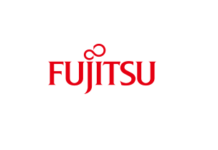
As corporations maintain to embrace virtual transformation, the position of controlled database services has become more and more critical in making sure efficient facts management. The panorama of managed databases is evolving hastily, driven by using technological advancements and the ever-converting demands of modern-day programs. In this text, we delve into the present day trends shaping the world of controlled database offerings, exploring how those developments are revolutionizing data management practices.
1. Serverless Database Architectures:
The rise of serverless computing has prolonged its influence to controlled database services. Serverless database architectures dispose of the want for organizations to control the underlying infrastructure, letting them recognition totally on their applications and facts. With serverless databases, organizations can gain computerized scaling, reduced operational overhead, and a pay-as-you-pass pricing version, optimizing resource usage and fee-performance.
Serverless architecture is an technique to software program design that permits builders to construct and run offerings while not having to manage the underlying infrastructure. Developers can write and install code, whilst a cloud provider provisions servers to run their programs, databases, and storage systems at any scale. In this article, we’ll cover how serverless architecture works, the blessings and disadvantages of the usage of it, and some equipment that will let you move serverless.
Serverless databases defined
Let’s observe the defining characteristics of a serverless database. A serverless database:
- Is a cloud-based database provider that can be used by an software through well-described APIs. For instance, serverless database DataStax Astra DB is available as a cloud service that runs in a couple of clouds, which includes AWS, GCP, and Azure, and is available via more than one APIs, inclusive of Stargate REST, GraphQL, and Document APIs.
- Is a completely controlled service. This means a cloud service provider manages normal database upkeep and operations, together with backup and repair, safety and encryption, tracking and performance tuning, and more. For instance, DataStax Astra DB robotically deals with facts replication and server disasters, helping packages that require excessive availability.
- Has integrated car scaling. Compute and garage sources are allotted and robotically and transparently scaled up or down to satisfy continuously changing call for. DataStax Astra DB can quick scale up to accommodate demand spikes for packages requiring excessive throughput. It can also robotically decrease to keep sources and fees while call for declines.
- Does now not divulge any facts approximately backend servers to database service users. Instead, users see database usage records, including what number of study and write requests have been accomplished and how much storage became consumed. Serverless database users are billed based totally on utilization, not the wide variety and type of servers. Astra DB payments customers primarily based on information motion and storage, in addition to the range of read and write request executions.
2. Multi-Cloud Database Deployments:
To beautify resilience, flexibility, and avoid supplier lock-in, agencies are an increasing number of adopting multi-cloud strategies for their managed database offerings. Deploying databases throughout a couple of cloud vendors permits companies to leverage the strengths of every platform, mitigate the chance of carrier disruptions, and optimize fees. Multi-cloud deployments have become a wellknown exercise for companies searching for a strong and adaptable database infrastructure.
Modern-day companies have loads to cope with, one among that is the complicated IT infrastructure. The servers, databases, and whatnot want steady updates to make sure statistics security and client delight. Ironically, the IT structures are the ones that face the most issues, including unplanned downtime. This is wherein cloud app modernization comes into the picture.
Cloud app modernization offers with migrating on-premises apps to the cloud. Though it reduces infrastructure costs by way of a fantastic margin, the cloud IT infrastructure can also face downtime. You can not predict an emergency downtime, however you could actually prepare for it.
MongoDB Atlas is a cloud database that allow you to with it. How? With the help of Multi-Cloud and Multi-Region clusters. Let’s examine ahead and spot how these clusters can be used to our gain and how to set up them with MongoDB Atlas.
Disadvantages of Multi-Cloud Databases
Sounds engaging proper? While multi-cloud databases may sound thrilling, there are a number of concerns with the technology. Security and information autonomy is still a challenge, particularly for FinTech or packages indulging EHR or EMR systems.
Long term expenses of walking a multi-cloud database has yet to be fully studied. Wild predictions are not welcome, as setting such huge investments should impact the business.
Exploring the numerous services from distinct providers is a amazing concept, however you also ought to take into account matters together with matters being cloud-agnostic and averting supplier lock-in ought to making a decision to explore different opportunities in the future.
Technology is usually developing and when primary changes arise, it’s regularly difficult to exchange onto exceptional platforms as it expenses cash and sources.
3. Integration with AI and Machine Learning:
Managed database offerings are integrating seamlessly with artificial intelligence (AI) and system getting to know (ML) technology. This integration allows organizations to derive precious insights from their records, automate habitual duties, and enhance selection-making methods. AI-pushed functions within controlled databases, consisting of intelligent query optimization and automated overall performance tuning, make contributions to stepped forward usual device performance.
We stay in a time of disruption, where Artificial Intelligence and machine getting to know are remodeling industries. AI and ML are reworking the tech industry by means of supporting companies in attaining their goals, making key decisions, and developing items and services.
For businesses, sales AI assists representatives in making higher information-driven decisions for long-time period enterprise operations and growing sales thru tailored deal cycles that meet the man or woman wishes of quit clients. ML-driven income can also perform with hyper-personalization, which is a vital advancement in first-rate-tuning client business cycles.
AI’s relevance and packages in groups are absolutely understood by means of modern day company leaders. AI/ML structures have a huge range of packages in a whole lot of industries and sectors, and this article highlights the pinnacle ways AI/ML will effect your small business in 2022.
Data integration is the technique of consolidating records from numerous resources into a unified, coherent, and accurate view, permitting informed selection-making. This procedure retrieves information from diverse formats and structures like databases, records warehouses, or APIs and converts it into a dependent and standardized layout.
Data integration is critical to improving the general performance of AI fashions, especially whilst coping with big statistics, because it serves as the foundation for AI and gadget studying initiatives. By combining diverse statistics assets and ensuring statistics first-class, information integration offers the building blocks for artificial intelligence and ML version training.
Understanding the relationship among information integration and AI is essential for optimizing the overall performance of AI systems, as it directly influences the quality and scope of the information used to train and validate fashions. Some key aspects consist of:
Improving records fine: Proper records integration guarantees that inconsistencies, inaccuracies, and duplications are resolved earlier than feeding them into machine mastering algorithms. High-first-class statistics performs a vital function in generating reliable predictions and enhancing the overall effectiveness of AI.
Reducing mistakes and redundancies: Data integration aids in addressing discrepancies that could originate from numerous formats or size gadgets gift within distinctive datasets. Combining multiple records sources eliminates redundancies supplying a cleanser dataset to train AI fashions.
Combining various datasets for complete evaluation: Integrating more than one datasets ensures that AI algorithms get entry to a broader range of statistics required for analysis. Machine studying fashions can higher capture difficult relationships between variables, with a richer dataset ensuing in more insightful and correct effects.
Data integration practices enable numerous datasets to be unified right into a coherent shape while keeping their integrity, main to greater accurate AI models.
4. Enhanced Security Measures:
As facts safety concerns keep growing, controlled database services are incorporating advanced protection capabilities to defend touchy records. Encryption at rest and in transit, quality-grained get entry to controls, and sturdy authentication mechanisms are becoming popular services. Additionally, managed databases are aligning with industry compliance requirements to ensure information privateness and meet regulatory necessities, instilling confidence in corporations and their customers.
When it involves safeguarding your belongings, banks depart no stone unturned. One such degree that ensures the safety of your deposits outside of regular banking hours is the supply of night depository offerings. These services have advanced through the years to incorporate better safety features, making them a reliable choice for companies and people alike.
From the attitude of the financial institution, imparting night depository services isn’t always just a convenience for clients, however also a way to mitigate risks associated with storing large sums of money on their premises overnight. By offering a steady and managed surroundings for deposits, banks can significantly lessen the probabilities of robbery or loss. This, in flip, boosts customer self assurance and strengthens the overall security framework of the banking gadget.
5. Edge Computing Database Services:
With the proliferation of side computing, controlled database offerings are extending their attain to the edge. Edge computing database offerings facilitate data processing and storage closer to the factor of use, lowering latency and enhancing the performance of side devices. This trend is specifically relevant for applications requiring actual-time responsiveness, which includes IoT (Internet of Things) deployments and facet analytics.
1. Edge software aid
Applications must be specially designed to run on the brink. You would possibly want to port existing applications from the cloud to area environments, or you may want to broaden side local applications. The platform you pick have to include its improvement suite. It may additionally combine with third-celebration offerings for app delivery through utility programming interfaces (APIs).
2. Analytics insights
Since facet endpoints are dispensed in nature, it could be challenging to hold manage and visibility through the years. Therefore, the platform have to encompass an analytics dashboard to reveal all side gadgets in your IT surroundings and use telemetry to acquire information from faraway places. Typically, aspect computing platforms will have a primary hub to maintain the observability of key metrics.
6. Automated Database Maintenance:
The automation of recurring database maintenance tasks is a key fashion in managed database services. Automation streamlines duties like backups, updates, and overall performance optimization, reducing the weight on IT groups and minimizing the risk of human mistakes. This trend no longer only complements operational efficiency however also contributes to the general reliability and availability of managed databases.
Maintenance of your databases is as vital as everyday backups. Once scheduled backups are set, the thought may seem that your facts is secure and sound and it’s miles, till a trouble appears.
As a rule, databases don’t crash completely, but there can be a pointy decrease in performance because of server laсk of disk space or some other issues which could corrupt databases. That’s why it’s particularly endorsed now not only to perform everyday backups of your databases however additionally preserve them.
Basically, database maintenance is decreased to the execution of square*.Cmd, *.Bat scripts. Scripts that have to be finished on a normal basis may be absolutely one-of-a-kind, from removing out of date data to build facts mart, however there are some of strategies which can be beneficial to execute often for each SQL Server: shrink database/documents, recreate/reorganize indexes, replace statistics for an index, update records for a table, update all records.
7. Containerization and Kubernetes Orchestration:
Containerization and Kubernetes orchestration are gaining traction within the managed database landscape. Containers provide a light-weight and transportable way to bundle and set up database offerings, enabling consistency throughout different environments. Kubernetes, as a container orchestration platform, simplifies the control and scaling of containerized database workloads, fostering agility and useful resource optimization.
8. Focus on Developer Productivity:
Managed database services are increasingly more emphasizing developer productiveness by using supplying person-friendly interfaces, integrations with famous development tools, and self-carrier competencies. This fashion objectives to empower developers to recognition more on constructing packages and less on the intricacies of database management, fostering agility and accelerating time-to-market.
Nine. Real-Time Analytics and Operational Intelligence:
To meet the demands of real-time choice-making, controlled database offerings are enhancing their help for actual-time analytics and operational intelligence. Features together with in-database analytics, streaming data processing, and integrated analytics platforms allow organizations to derive on the spot insights from their facts, permitting quicker and more knowledgeable choice-making.
10. Continuous Innovation and Vendor Competition:
The managed database offerings marketplace is witnessing non-stop innovation, with vendors frequently introducing new capabilities and abilities. The aggressive landscape is driving carriers to distinguish themselves thru overall performance optimizations, cost-effectiveness, and modern answers. Businesses advantage from this surroundings, getting access to a diverse range of managed database options tailor-made to their particular needs.
Conclusion:
The modern-day trends in controlled database offerings are shaping the destiny of facts control, offering organizations with revolutionary answers to satisfy the demanding situations of the digital age. From serverless architectures to multi-cloud deployments, more suitable security features, and a focal point on developer productivity, these traits reflect a dedication to efficiency, flexibility, and continuous improvement. As companies embrace these trends, they position themselves to leverage the whole capacity of managed database offerings, ensuring a resilient and adaptable foundation for his or her facts control needs.


















